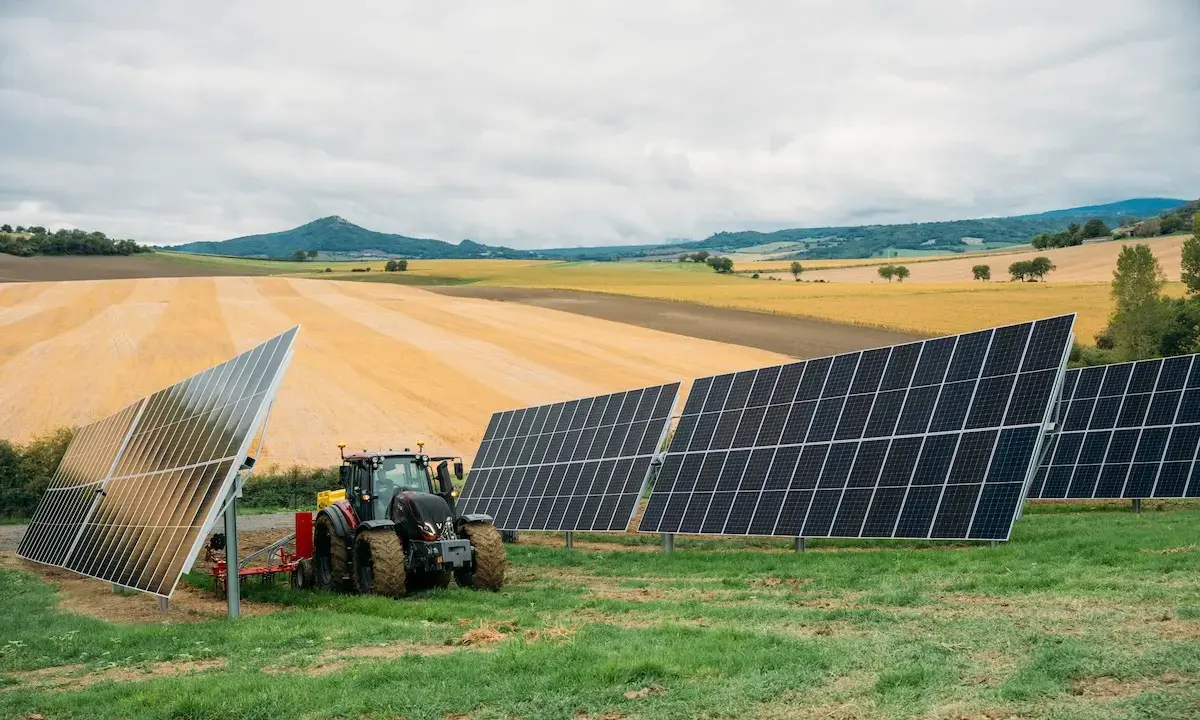Agrivoltaics, a solution to climate hazards
A lever for adapting to drought and heat peaks
By 2050, projections predict an average rise in temperatures of +2.7°C, accompanied by more frequent and more intense episodes of drought. Farmers therefore seek to preserve their crops and the economic viability of their farms.
The priorities: to limit the pressure on the water resource, protect crops against excessive sunlight and heat peaks.
Among the solutions explored,agrivoltaics stands out. Often associated with outdoor breeding, this model also demonstrates its interest in crops. The plants benefit from the microclimate created by The shading of solar panels, which moderates climatic excesses.
>> To read: Agrivoltaics: what are the advantages for agriculture ?
Additional income to secure operations
At the same time, this approach makes it possible to generate additional income, thanks to the rents received, helping to strengthen the financial stability of farms in the long term.
Concrete results from TSE experiments
Pilot sites to measure the concrete impact of agrivoltaic solutions
Since 2022, TSE is conducting experiments on four pilot sites located in Somme, Calvados, Côte-d'Or and Haute-Saône. These tests demonstrate that it is possible to combine agricultural production, renewable energy production, sustainable water management and long-term economic viability.
A measured impact on crop water stress
The solar panels installed above the crops play one protective role in the face of climatic hazards : they attenuate the temperature variations supported by plants and limit their exposure to water stress. On the site ofAmance, in Haute-Saône, surveys carried out in 2022 on soybean cultivation showed a reduction of 57% in periods of water deficit during the crop cycle. Results confirmed in 2023 and 2024 on the others agrivoltaic demonstrators.
>> To read: Water and agriculture: understanding the issue in 6 key points
Reduction of evapoperspiration
Less water needs thanks to the shading of the solar panels
The installation of photovoltaic panels above crops also makes it possible to reduce the water needs of plants. According to a study conducted by ADEME, this water consumption can be reduced by up to 30%. This advantage is reinforced in the case of mobile systems, whose maximum vertical position allows a homogeneous distribution of rainwater on the plot.
Under the TSE agricultural canopy for example, extreme temperatures are alleviated and evapotranspiration in plants is significantly reduced. As soon as the air temperature exceeds 20°C, a significant thermal difference is observed between the areas shaded by solar panels and the plots exposed in the open field. This differential becomes particularly valuable at 25°C, the threshold at which heat stress directly affects the crop, especially when the grains are filled - a decisive phase in order to achieve the expected yields.
A microclimate that protects against frost, hail and wind
A thermal barrier against spring frosts
Agrivoltaic installations not only protect against hot weather: they also limit the risks associated with low temperatures. By partially keeping heat at ground level when temperatures drop, they contribute to reduce the risk of spring frost.
Protection against bad weather
In addition, the physical structure of the panels provides additional protection against the weather, while playing a barrier role against hail and wind.

.webp)










